Bugs that Look Like Termites
I often encounter bugs that look like termites, and it’s crucial to know the difference. Many insects, such as bed bugs, flying ants, or carpenter ants, can easily be mistaken for termites, leading to unnecessary panic or misidentification. Historically, termites have caused significant damage to homes and structures, making it essential for homeowners to recognize these pests accurately.
In my experience, understanding the characteristics of these look-alikes such as bee, termite infestations, bed bugs, and worker termites can save time and money. Whether it’s ants or other wood-boring insects, knowing what I’m dealing with helps me take appropriate action. This post will help identify these common pests and provide tips for effective management strategies.
Identifying Bugs That Resemble Termites
Body Shape
Bugs that look like termites often share similar body shapes. Termites have elongated bodies, usually about half an inch long. In contrast, other insects may have a more rounded or flattened appearance. For example, carpenter ants can be mistaken for termites due to their size and color.
I remember mistaking carpenter ants for termites in my home once. The shape was similar, but the behavior gave them away. Observing these differences is crucial for correct pest identification.
Behavior Patterns
Behavior plays a significant role in distinguishing between termites and other insects. Winged termites swarm during specific seasons, usually in spring. They are attracted to light, which makes them more visible at night.
In contrast, some insects do not swarm. For instance, termite flies may look similar but tend to appear alone rather than in swarms. Their behavior helps in identifying the species correctly.
Signs of Damage
Signs of wood damage are vital clues when identifying these pests. Termites create tunnels and galleries inside wood, leading to structural damage. I have seen firsthand how severe this can be in homes with untreated infestations.
Other insects may cause damage as well, but it often looks different. For example, wood-boring beetles leave small holes on the surface of wood rather than extensive tunneling like drywood termites. Checking for these signs can help determine if you have a termite infestation or another problem.
Nesting Habits
Nesting habits also differ among these insects. Subterranean termites build nests underground and require moisture to thrive. Drywood termites, on the other hand, nest within the wood they consume.
Identifying where the bugs are nesting can provide insight into their species. If you find a nest in your drywall or wooden structures, it is likely from drywood termites or similar pests.
Color and Size
Color and size can also indicate different insect types. Most termites have a light brown or tan color, while other bugs might be darker or more varied in hue. For example, brown insects like certain beetles can be mistaken for termites due to their coloration.
Size variations exist as well. Some flying insects might be larger or smaller than typical winged termites. Recognizing these differences leads to better insect detection.
Physical Traits of Termites
Antennae Structure
I often notice the straight, beaded antennae that are a key feature of actual termites. These antennae can easily distinguish them from similar insects. Other bugs may have curved or elbowed antennae, which creates confusion. The straight structure of termite antennae is a clear indicator of their species. It’s fascinating how such small details can help identify them precisely.
Body Shape
Uniform body shape is another significant trait. Bodied termites display a smooth, elongated form without a distinct waist. This contrasts sharply with ants, which have a narrow waist. The lack of segmentation in termites makes them appear more cylindrical. I’ve found it helpful to remember this when examining insects closely. Recognizing these physical traits can simplify identification in complex situations.
Wing Characteristics
Wings also play an essential role in identifying termites. During swarming seasons, reproductive termites develop wings that are equal in size. This characteristic sets them apart from other insects like ants, which have unequal wing sizes. The wings are typically pale and fragile, making them easily lost after mating. I once observed a swarm and was struck by how many wings were left behind afterward. It highlighted the importance of recognizing these features.
Color Variations
Termites come in various colors including brown and black shades. Pale termites can sometimes blend into their surroundings, making them harder to spot. Their coloration varies depending on the species and environment. Understanding these color differences enhances identification skills.
Signs of Infestation
Identifying signs of termite activity is crucial for prevention. Look for small holes in wood or walls, as these indicate tunneling behavior. Frass—termite droppings—often resembles sawdust and can signal an infestation nearby. I’ve seen firsthand how important it is to check for these signs regularly to catch problems early.
Key Differences from Similar Bugs
Recognizing key differences between termites and look-alikes is vital for effective pest control. For instance, while both may infest wood, their behaviors differ significantly. Termites consume wood for sustenance, while ants do not chew through it in the same way. Understanding these distinctions can save homeowners from costly damage.
Recognize Carpenter Ants

Body Structure
Carpenter ants have a segmented body structure. Their bodies consist of three parts: the head, thorax, and abdomen. The large abdomen is a key feature that sets them apart from termites. I often find it helpful to observe their size; carpenter ants are generally larger than termites. They can grow up to 0.5 inches in length.
The smooth, shiny appearance of carpenter ants also helps in identification. Unlike termites, which have a more uniform shape, carpenter ants display a clear division between their body sections. This distinct segmentation is crucial for recognizing these pests.
Antennae Features
Look closely at the antennae of carpenter ants. They possess elbowed antennae that are distinctly bent. This characteristic differentiates them from termites, which have straight antennae. The shape of the antennae can be a quick way to identify these insects.
I remember checking my home for signs of infestation. Noticing the elbowed antennae helped me confirm the presence of carpenter ants rather than termites. This small detail can save you from misidentifying the pests in your home.
Habitat Preferences
Carpenter ants prefer damp wood, particularly near sources of moisture. They often nest in areas like kitchens and bathrooms where wood may be exposed to water damage. These brown ants are drawn to rotting or soft wood as it is easier for them to excavate.
If you suspect an infestation, inspect places around sinks or other moisture-prone areas. I found carpenter ants nesting in an old wooden beam under my sink once. It was surprising to see how much damage they could cause in such a short time.
Signs of Infestation
Signs of carpenter ant activity include sawdust-like material and rustling noises within walls. Unlike termites, which consume wood, carpenter ants create galleries by chewing through wood without eating it. This behavior leaves behind noticeable debris.
Keep an eye out for these signs if you suspect an infestation. Early detection can prevent further damage to your property.
Identify Powderpost Beetles

Size Matters
Adult powderpost beetles measure less than a quarter-inch long. Their small size can make them easy to overlook. I often find myself inspecting wood closely when I suspect an infestation. The tiny dimensions of these beetles can lead to confusion with other pests, such as termites.
Signs of Infestation
Look for fine powdery dust around wooden surfaces. This dust is a clear sign of powderpost beetles at work. They create small round holes in the wood as they exit. These holes are typically about 1/16 inch in diameter. In my experience, discovering this dust often leads to further investigation. The presence of this powder indicates that adult powderpost beetles have been active.
Wood Preferences
Powderpost beetles prefer hardwoods over softwoods. They thrive in oak, maple, and hickory. Understanding their preference can aid in identification. I’ve seen many cases where homeowners mistakenly believe they have termites due to the damage found in hardwood furniture. Recognizing the specific wood types involved is crucial for accurate identification.
Life Cycle Insights
The life cycle of powderpost beetles begins with eggs laid in cracks or crevices of wood. Larvae hatch and tunnel through the wood, causing damage as they feed on it. This stage can last several months to a few years, depending on environmental conditions. Adult powderpost beetles emerge from the wood, creating exit holes and continuing the cycle.
Damage Comparison
Damage caused by powderpost beetles differs from that of termites. While both pests can harm wood structures, their methods vary. Termites consume wood from the inside out, leading to hollowed-out beams. Powderpost beetles tend to leave behind fine dust and smaller exit holes. This difference is vital for proper pest management strategies.
Prevention Strategies
Preventing powderpost beetle infestations involves controlling moisture levels in wooden structures. Keeping humidity low reduces the likelihood of infestations. Regular inspections can also help identify early signs of trouble before significant damage occurs. I recommend checking wooden furniture and beams periodically for any signs of these pests.
Spot Carpenter Bees

Appearance
Carpenter bees have a large, black appearance. Their bodies are robust and shiny, resembling bumblebees but without the yellow stripes. They can be quite noticeable when they hover around wood structures. I often see them buzzing near my porch during warm months.
These bees drill distinctive round holes into wood. The holes are about half an inch in diameter. They create these openings to make nests for their young. Unlike termites, carpenter bees do not consume wood; they simply nest in it. This behavior sets them apart and makes identification easier.
Nesting Behavior
Carpenter bees prefer weathered wood surfaces. They are attracted to untreated or decaying wood. This preference can indicate their presence on your property. I’ve found that checking old wooden fences or eaves is helpful in spotting them.
Once they find suitable wood, they start drilling. The nesting process involves creating long tunnels inside the wood. Each tunnel can be several feet long and may house multiple eggs. These tunnels are often hidden from plain sight, making early detection challenging.
Damage Potential
While carpenter bees do not eat wood, their nesting can cause damage over time. Repeated drilling weakens wooden structures. This can lead to more significant issues, especially if left unchecked. I learned this the hard way after noticing cracks in my deck.
Homeowners should monitor areas where these bees are active. Regular inspections can help prevent extensive damage. If you notice large holes or sawdust-like debris beneath them, take action quickly.
Control Measures
Controlling carpenter bee populations requires targeted strategies. One effective method is to paint or seal exposed wood surfaces. This discourages them from nesting because they prefer untreated wood.
Using insecticidal sprays can also help manage their population. Apply these products directly into the holes during the evening when bees are less active. Always follow safety guidelines when using chemicals.
If the infestation is severe, consider hiring pest control experts. They can assess the situation and provide tailored solutions.
Understand Acrobat Ants
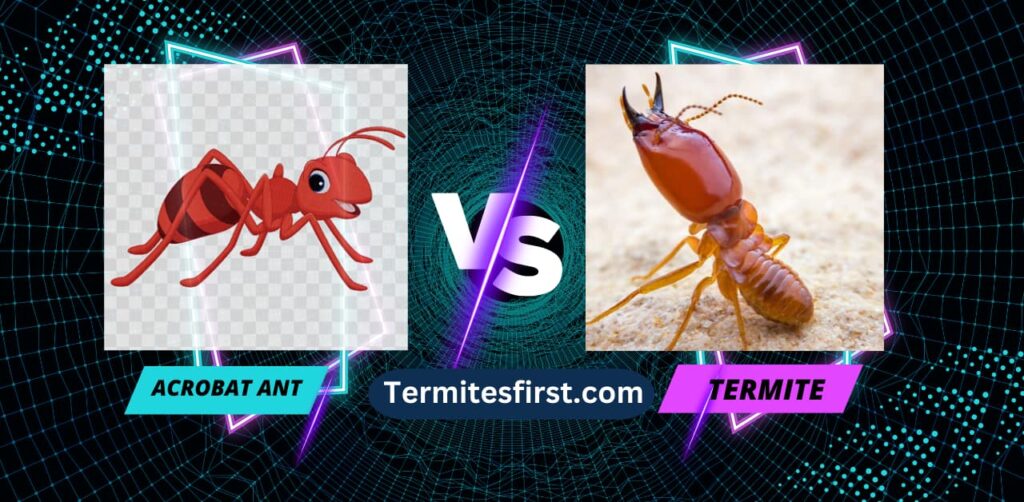
Identification
Acrobat ants are easily recognizable. They have a reddish-brown color and a small size, typically measuring about 1/8 to 1/4 inch long. Their distinct coloration helps in differentiating them from other ant species. I often spot these ants when they invade my garden, particularly near rotting wood.
These ants exhibit a unique feature. They can raise their abdomens over their thoraxes. This posture sets them apart from other ants. Observing this behavior can help you confirm if you are dealing with acrobat ants.
Wing Structure
Flying acrobat ants possess a specific wing structure. Their front wings are larger than the back pair. This characteristic is crucial for identification, especially during mating season. The difference in wing size is not just aesthetic; it plays a role in their flight dynamics.
I remember the first time I saw flying ants. I was confused about whether they were termites or acrobat ants. The wing structure provided clarity. It’s a helpful detail to keep in mind for anyone trying to identify these insects.
Habitat and Behavior
Acrobat ants thrive in various environments. They often nest in decaying wood or within wall voids of buildings. These nesting habits make them common pests in homes and gardens. Their preference for moist areas can lead to infestations if not managed properly.
Their behavior is also notable. Acrobat ants forage for food actively and can form large colonies. They often work together to transport food back to their nests. I find it fascinating how organized they can be, reminiscent of a well-functioning team.
Comparison with Termites
Identifying acrobat ants also involves comparing them with termites. While both may invade wooden structures, their differences are significant. Termites tend to have straight antennae and equal-sized wings, unlike acrobat ants. The contrast in body shape is another giveaway. Termites have a more elongated, cylindrical body, while acrobat ants have a pinched waist appearance. Understanding these differences can save homeowners from misidentifying an infestation.
Mayflies

Mayflies stand out with their delicate, slender bodies and long tails. These insects often appear in large swarms during the warmer months, especially in May. Their presence indicates healthy water ecosystems.
Mayflies have a notably short lifespan. Adults typically live only a day or two, making them one of the most ephemeral insects. This brief existence is primarily for mating purposes. After mating, they lay eggs in water, where the larvae will develop.
Differentiating mayflies from termites is crucial. Unlike termites, mayflies do not infest wood. They have unique wing structures that set them apart: mayflies possess two pairs of wings that are held upright when at rest, while termite wings lie flat against their bodies.
In terms of color, mayflies can range from brown to black, adding to their distinctiveness among various insects. Observing their behavior is also key; mayflies are harmless insects that do not cause damage to lawns or structures like termites do.
For insect detection, recognizing signs of mayfly activity can help distinguish them from more harmful pests. While both mayflies and termites might be present during certain seasons, understanding their differences assists in proper identification and management.
Wood-Boring Beetles

Wood-boring beetles are often mistaken for termites due to their small size and brown coloration. These beetles create distinctive round exit holes in wood, which can be a clear indicator of their presence.
Adult powderpost beetles are one of the most common types in this category. They measure about 1/8 to 1/4 inch long and have elongated bodies. Unlike termites, which consume wood, wood-boring beetles cause damage through tunneling. Their larvae feed on wood, creating extensive galleries that weaken wooden structures.
Statistics show that powderpost beetles can lead to significant structural damage if not identified correctly. For instance, a single infestation can compromise the integrity of beams or furniture within just a few years.
Correct pest identification is crucial for effective management. Homeowners must differentiate between these brown insects and subterranean or drywood termites. While both pests can cause damage, their behavior and life cycles differ significantly.
To identify wood-boring beetles, look for:
- Small round exit holes in wood
- Fine powdery frass (excrement) near infested areas
- Tunneling patterns beneath the surface of the wood
Prompt action is essential when these signs appear. Treatment options include insecticides or professional pest control services to eliminate both adult beetles and larvae.
Booklice
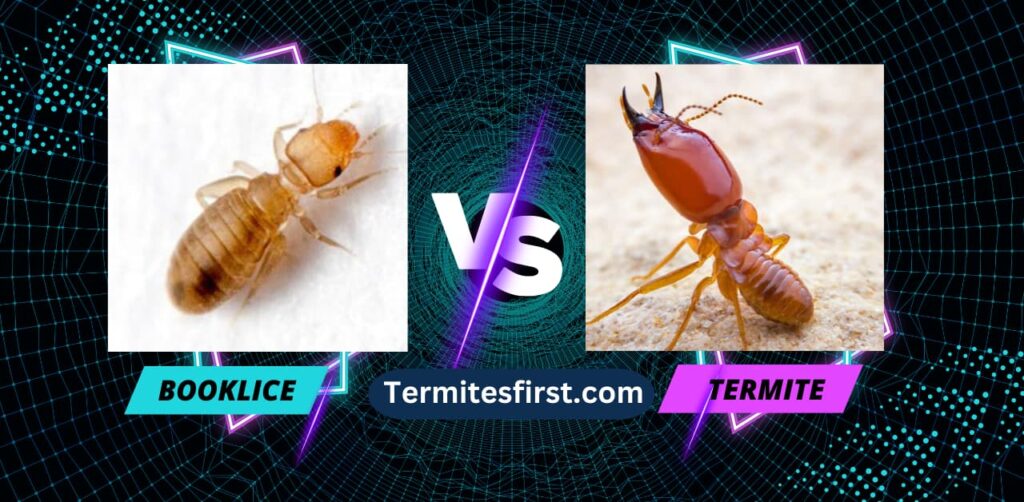
Booklice are small insects, typically measuring about 1 to 2 millimeters in length. Their soft bodies and tiny size make them easy to overlook. They thrive in damp environments like basements or bathrooms, often appearing where moisture levels rise.
These pests prefer feeding on mold and organic matter. Unlike termites, they do not consume wood. This distinction is crucial for identification. Booklice lack wings and have a more oval body shape compared to the elongated form of termites.
In terms of behavior, booklice are usually found in areas with high humidity. They can reproduce quickly under favorable conditions, leading to noticeable infestations if left unchecked. A study by the University of Florida highlights their rapid life cycle, where females can lay up to 50 eggs in just a few days.
To manage booklice, maintaining low humidity levels is essential. Using dehumidifiers can significantly help reduce their population. Regular cleaning to eliminate mold and organic debris also plays a vital role.
For those unsure about these pests, contacting a pest control professional can provide clarity and assistance. Understanding the differences between booklice and termites can prevent unnecessary worry over potential wood damage.
Springtails
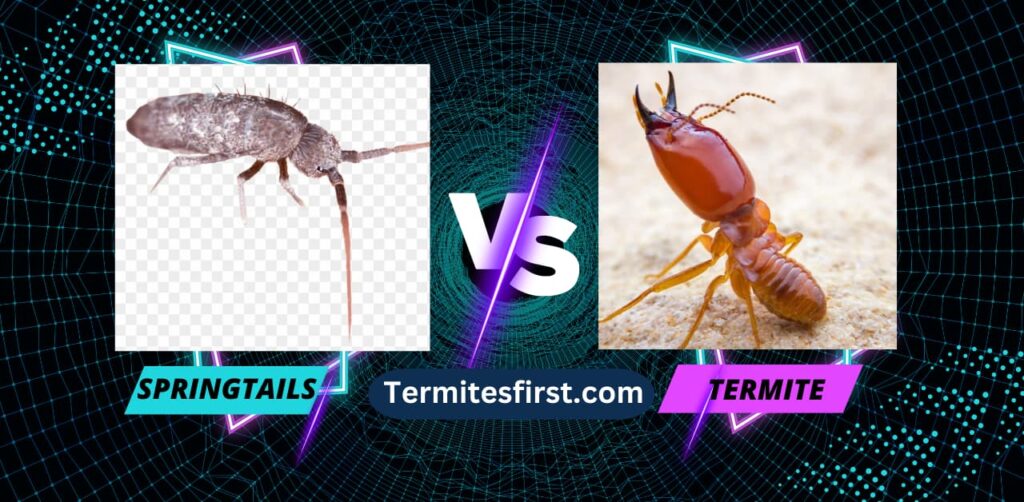
Springtails are tiny insects that can easily be mistaken for termites due to their small size and similar habitat preferences. They possess a unique ability to jump using a tail-like appendage called a furcula. This feature distinguishes them from actual termites, which do not have this jumping capability.
Springtails thrive in moist conditions, often found in soil, leaf litter, or decaying organic matter. Their presence is common in gardens and wooded areas where humidity levels are high. Unlike termites, springtails primarily feed on decaying plant material rather than wood. This dietary difference is crucial for pest inspections, as it helps identify specific pests present in an area.
While both springtails and termites may coexist in similar environments, their behaviors and ecological roles differ significantly. Termite infestations can lead to severe damage in structures, especially when they consume wood and drywall. In contrast, springtails do not pose a direct threat to buildings but can indicate moisture issues that may attract other pests.
Understanding these distinctions is vital for homeowners dealing with potential pest infestations. Recognizing that springtails do not cause the same damage as pale termites or other termite species helps prevent unnecessary treatments and focuses efforts on addressing underlying moisture problems.
Swarming Ants
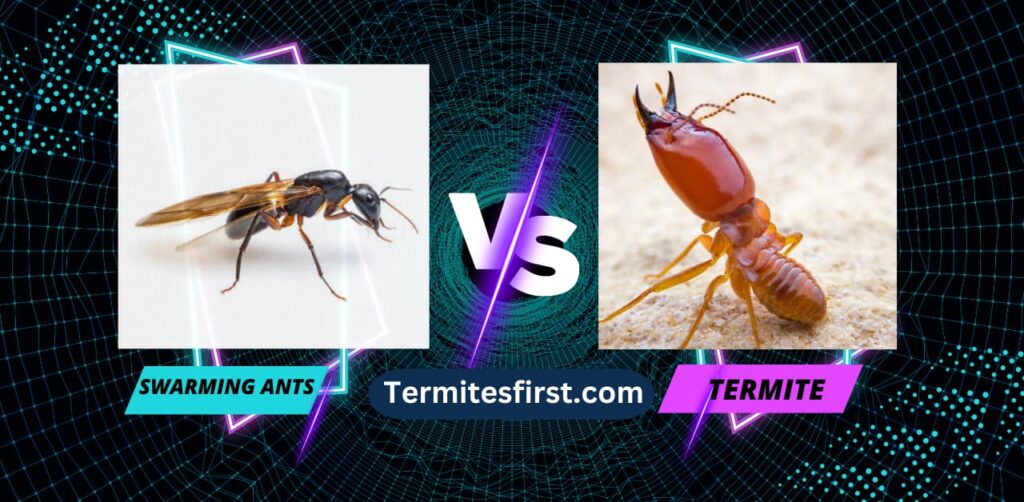
Swarming ants emerge during mating season, displaying temporary wings that distinguish them from other insects. These flying ants often appear in large groups, creating a striking sight as they take to the skies to establish new colonies.
The behavior of swarming ants is fascinating. They gather in significant numbers, sometimes overwhelming areas with their presence. This infestation can cause concern for homeowners, as these brown ants may invade properties in search of food and shelter.
When comparing swarming ants to flying termites, key differences become evident. Ants possess segmented bodies and elbowed antennae, while termites have straight bodies and a more uniform shape. Recognizing these traits is crucial for proper identification.
Acrobat ants are another example of swarming ants. They are known for their unique ability to bend their bodies backward when threatened. This characteristic adds to the diversity within the ant family.
In terms of size, swarming ants can vary but generally measure between 1/8 to 1 inch long. Their size and color can help differentiate them from termites, which tend to be slightly larger and paler.
Understanding these distinctions aids in effective pest management. Homeowners should monitor for signs of swarming ants to prevent potential infestations before they escalate.
Steps to Confirm Termite Infestation
Inspect Mud Tubes
Inspecting for mud tubes is a crucial step. These tubes are often found near wooden structures. They serve as highways for termites, allowing them to travel between their colony and food sources. I remember the first time I saw these tubes in my home. It was alarming to realize how easily termites could access my property.
Look closely at the foundation of your house. Check areas like crawl spaces, basements, and attics. If you find these tubes, it’s a strong indication of termite activity.
Effective Pest Control Measures
Preventive Steps
Sealing cracks is crucial in preventing pest infestations. I often find that small openings can allow pests to enter homes unnoticed. Reducing moisture levels also plays a significant role. Pests thrive in damp environments. Fixing leaks and using dehumidifiers can help keep areas dry.
Regular lawn care is vital. Maintaining healthy grass and plants can deter many common pests. I make it a habit to trim bushes and trees regularly. This reduces hiding spots for pests and helps improve air circulation.
Bait Systems
Utilizing bait systems is an effective method for managing specific pests. These systems attract insects, allowing them to consume poison without directly affecting the environment. For termite control, these bait stations are particularly useful. They contain slow-acting insecticides that termites take back to their colonies, reducing their population over time.
I have seen success with these systems in my own home. It’s essential to follow the manufacturer’s instructions closely. Proper placement of bait stations increases effectiveness against infestations.
Professional Inspections
Scheduling regular inspections with pest control professionals is necessary for long-term solutions. Experts can identify pest issues early on before they escalate into larger problems. I recommend having inspections at least once a year.
Professionals use specialized tools and techniques during their assessments. They can detect hidden infestations that may not be visible to the untrained eye. Their expertise ensures that any pest problems are addressed promptly and effectively.
Insecticides Usage
Insecticides specifically designed for termite control should be used carefully. Applying these chemicals requires knowledge of the right products and methods. Always read labels and follow safety guidelines when using insecticides.
I prefer contacting professionals for this task since they have the training needed to apply treatments safely. This approach minimizes risks to my family and pets while effectively dealing with pests.
Continuous Monitoring
Ongoing monitoring is essential after initial treatment measures. Regular checks can help detect any signs of returning infestations. Many pest control services offer maintenance plans that include periodic inspections and treatments.
Conclusion:
Identifying bugs that look like termites is crucial for protecting your home. By recognizing the differences between termites and similar pests, I can take proactive measures to prevent damage. I’ve covered how to spot carpenter ants, powderpost beetles, carpenter bees, and acrobat ants. Each has unique traits that set them apart from termites.
Effective pest control is essential. I recommend consulting a professional if you suspect an infestation. Don’t wait until it’s too late—taking action now can save you time and money down the road. Stay informed and vigilant, and you’ll keep those pesky bugs at bay.
FAQ’s:
Bugs that resemble termites include carpenter ants, powderpost beetles, carpenter bees, and acrobat ants. Each has distinct features that differentiate them from termites.
Termites have straight antennae and a uniform waist, while carpenter ants have bent antennae and a narrow waist. Check their nesting habits for confirmation.
Yes, powderpost beetles can damage wood by laying eggs inside. Their larvae tunnel through wood, causing structural issues over time.
Carpenter bees are large, with a shiny black abdomen and fuzzy yellow thorax. They create round holes in wood for nesting.
Signs of termite infestation include mud tubes, discarded wings, hollow-sounding wood, and frass (termite droppings). Early detection is crucial.
While DIY methods exist, professional pest control is recommended for effective termite management. Experts can ensure thorough treatment and prevention.

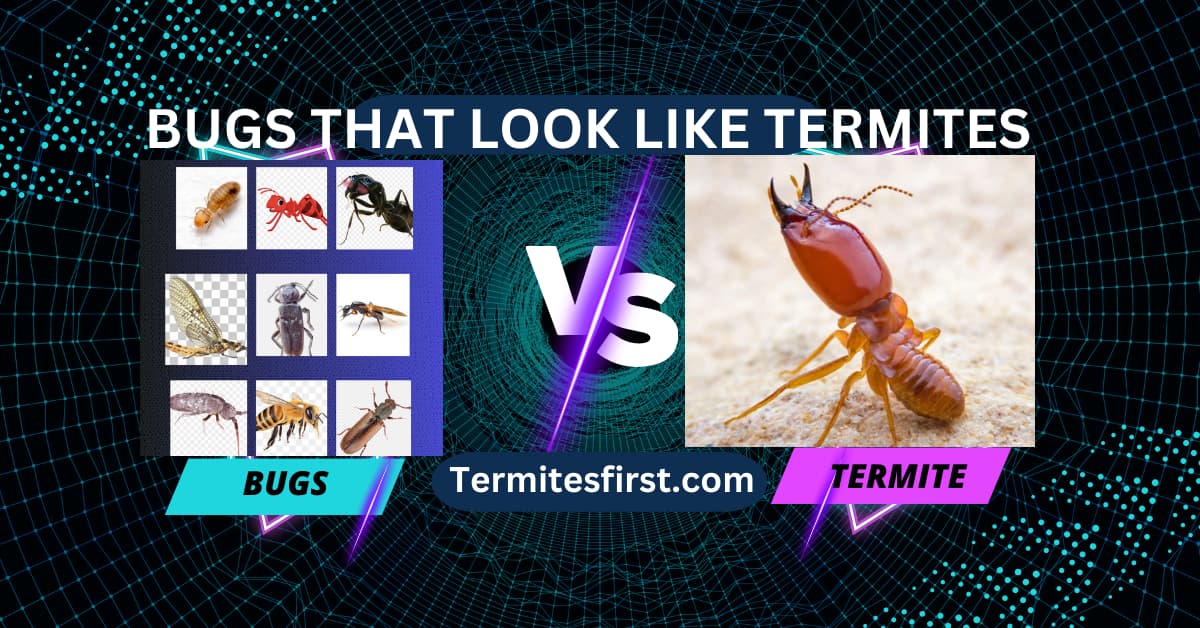
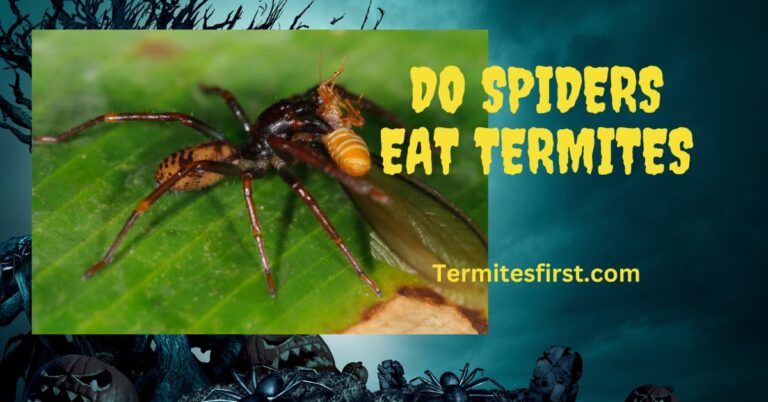
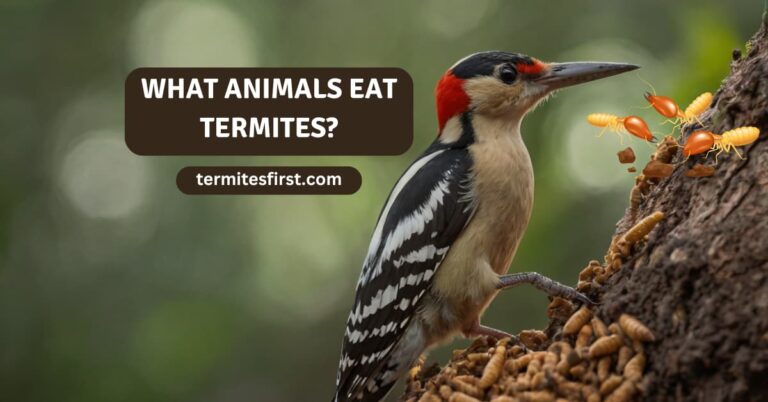
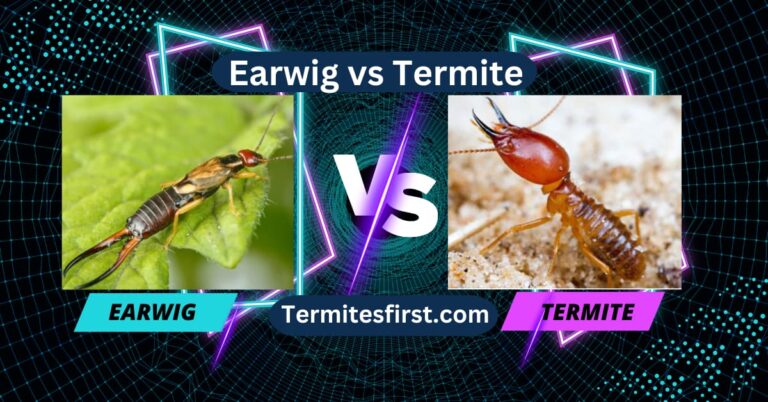
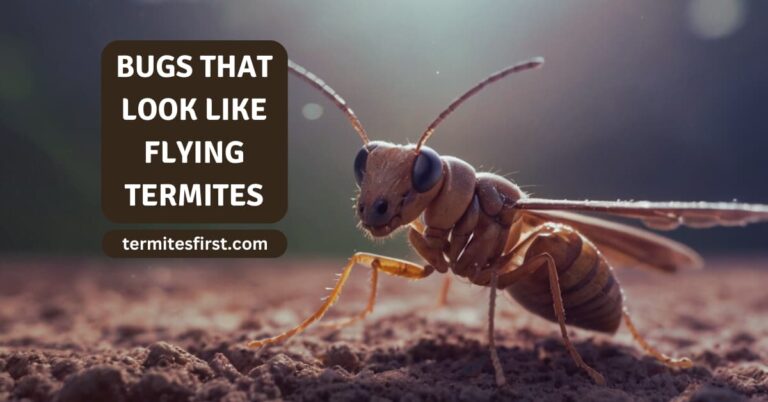
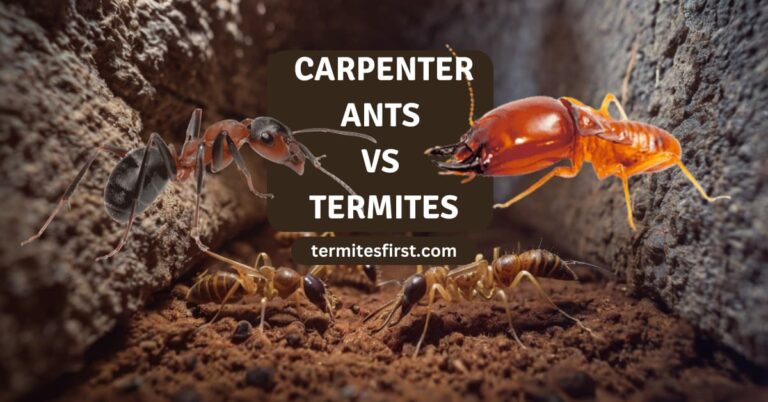
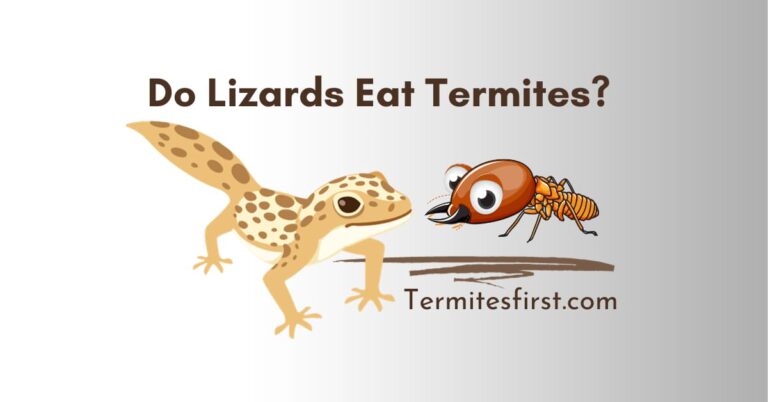
8 Comments